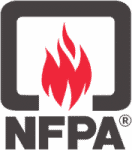As the summer heat sets in, it is vital to understand the dangers of heat stress and how to prevent serious health issues. If your company performs work outdoors or in hot work areas, your employees are at risk! To keep your employees safe, your company must provide heat stress training, monitoring, and personal protective equipment.
High temperatures are not the only factors that contribute to heat stress. High humidity, direct sunlight, and limited air movement can increase risks.
What are the signs of heat stress?
A person suffering from heat stress may be confused or even too disoriented to know they’re suffering from heat stress. It is important that workers keep an eye on each other and look out for the following signs:
- Pale or flushed face
- Skin that is hot (usually dry), red, or spotted
- Muscle cramps, from the loss of sodium
- Vomiting
- A body temperature over 105°F
- Fainting
- Seizures
- Headache
- Dizziness
- Fast heartbeat
Heat stress and illness are not necessarily progressive. A worker can bypass exhaustion and go straight into heat stroke. Recognizing signs early can save lives.
How to treat heat stress symptoms?
If you see someone with signs of heat stress, have them sit or lie down in a cool, shady area. Apply cool wet cloths or soak their clothes in water, and if awake, give them water. Avoid applying ice directly to the skin or allowing the person to become so cold that they start to shiver. Stay by their side; do not leave the person alone. If there is no improvement, you must seek medical attention. OSHA recorded 20 worker fatalities due to heat in 2022.
How to prevent heat stress?
Heat stress can be prevented through a number of measures. Ensure cool drinking water is provided near work area and encourage workers to drink before beginning work, after lunch, and every 15-20 minutes during work. OSHA recommends one cup of water every 15 minutes. Avoid caffeinated drinks and those high in sugar.
Acclimatization is one of the most important factors to prevent heat stress. Heat acclimatization is the improvement in heat tolerance that comes from gradually increasing the intensity or duration of work performed in a hot setting. The best way to acclimatize a worker to the heat is to increase the workload performed in a hot setting gradually over a period of 1–2 weeks.
While new workers are the most at risk of heat illness, they aren’t the only ones. If workers have been away for a week or more, they may lose their heat acclimatization and will need to be reacclimatized to the heat by having their workload increase gradually when they return. If possible, schedule heavier work tasks for the cooler parts of the day.
How to keep your workers safe?
One of the most important tools to prevent heat stress is providing your employees with safety training. If your employees know how to prevent, recognize, and treat heat stress, your team can look out for one another and prevent potentially fatal incidents.
In addition to training, creating a Heat Illness Prevention Plan will help companies plan ahead to protect workers. This plan should include elements such as assigning responsibility for oversight, acclimatization practices, hydration and break schedules, engineering and work practice controls, and training requirements.
At Circle Safety and Health Consultants, our highly trained safety professionals can help you develop a Heat Illness Prevention Plan and assist with other services and more. For more information on how to stay in compliance and protect your workers from the dangers of heat stress, contact us today at 804-355-7255.








